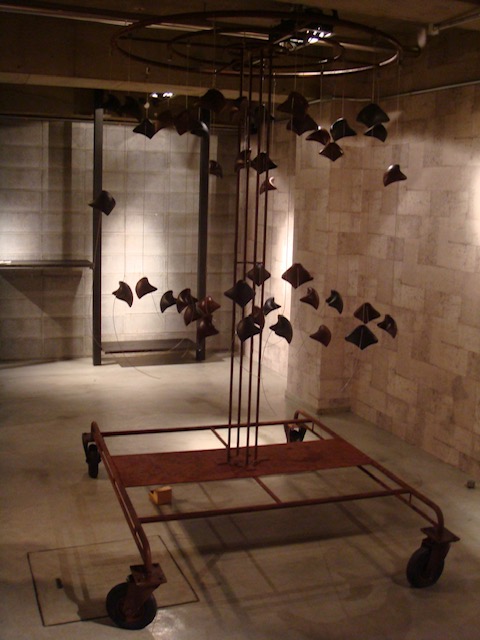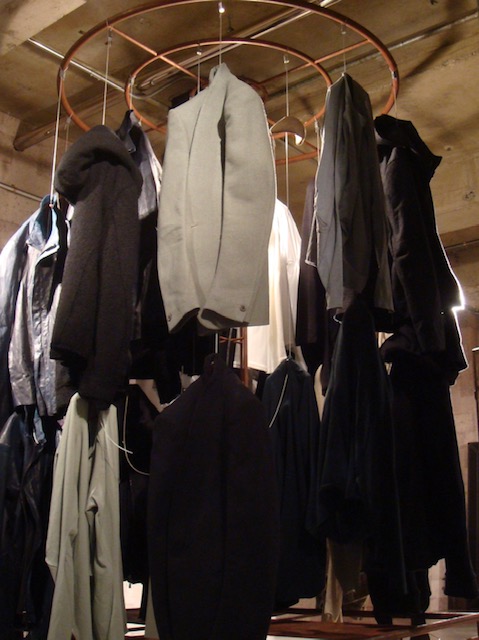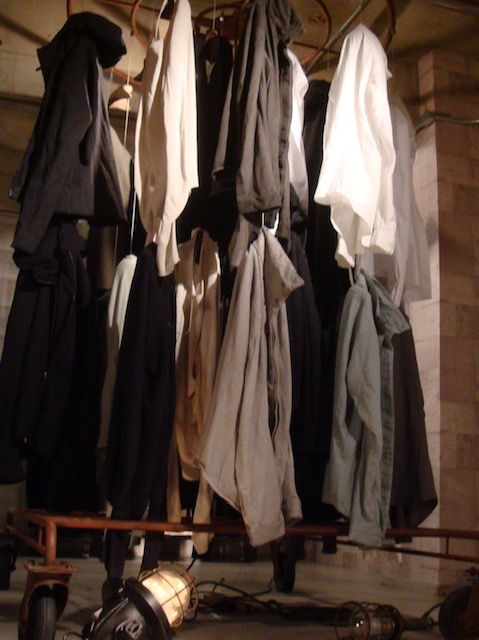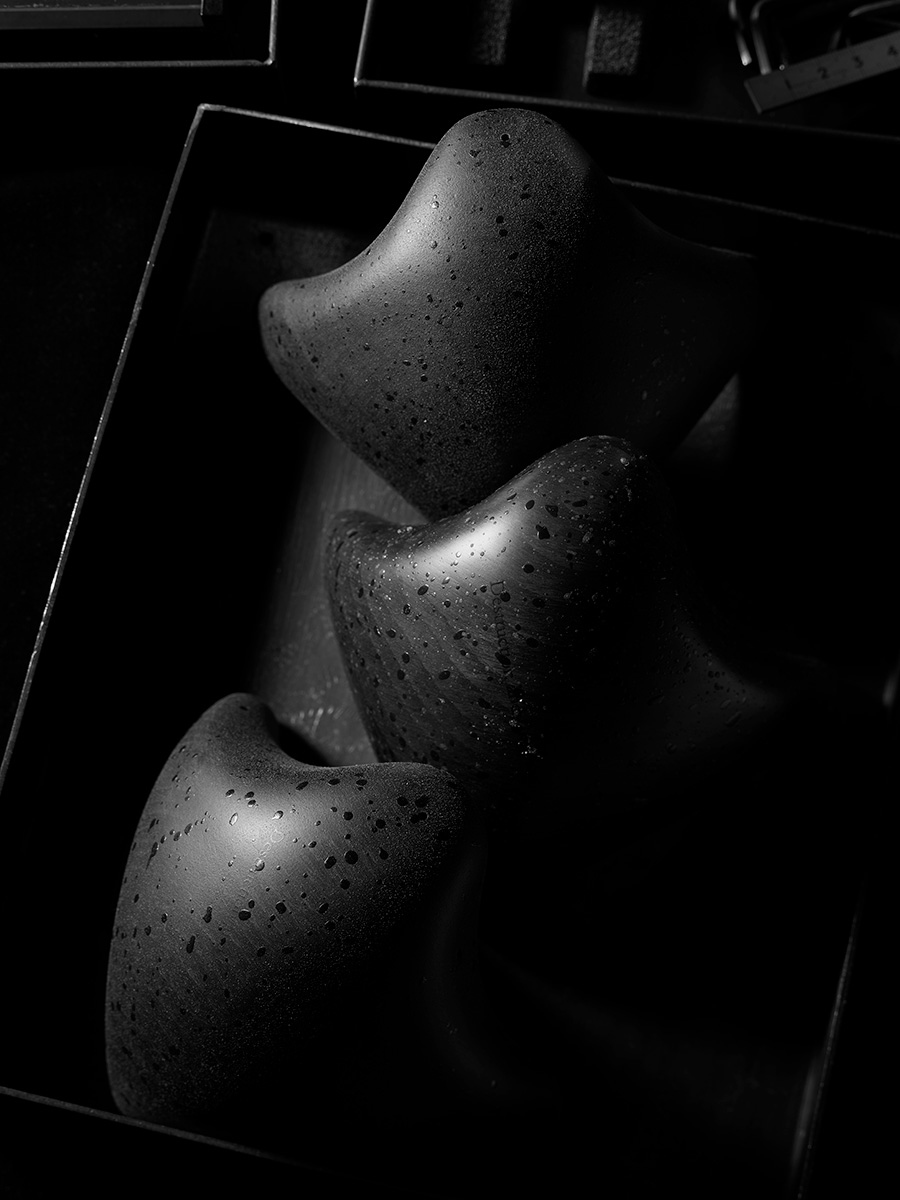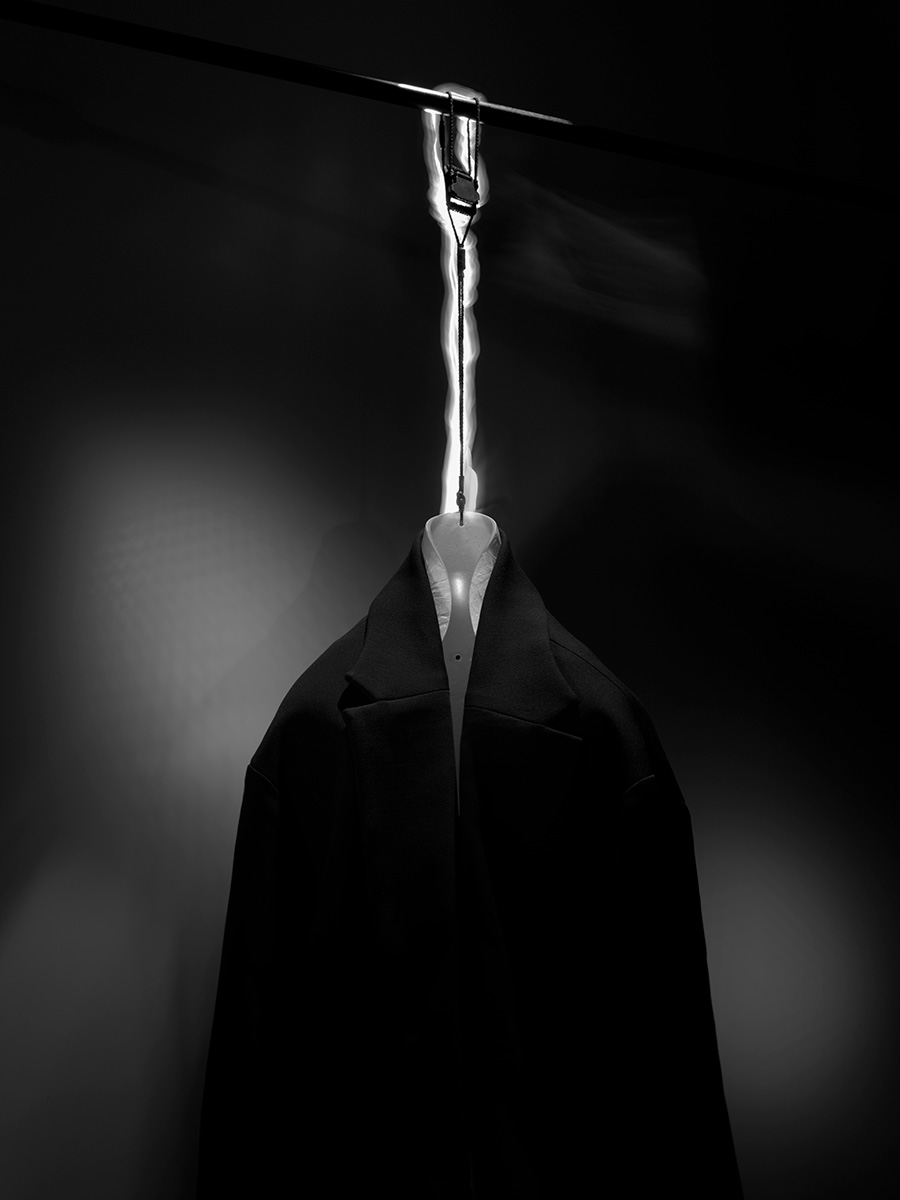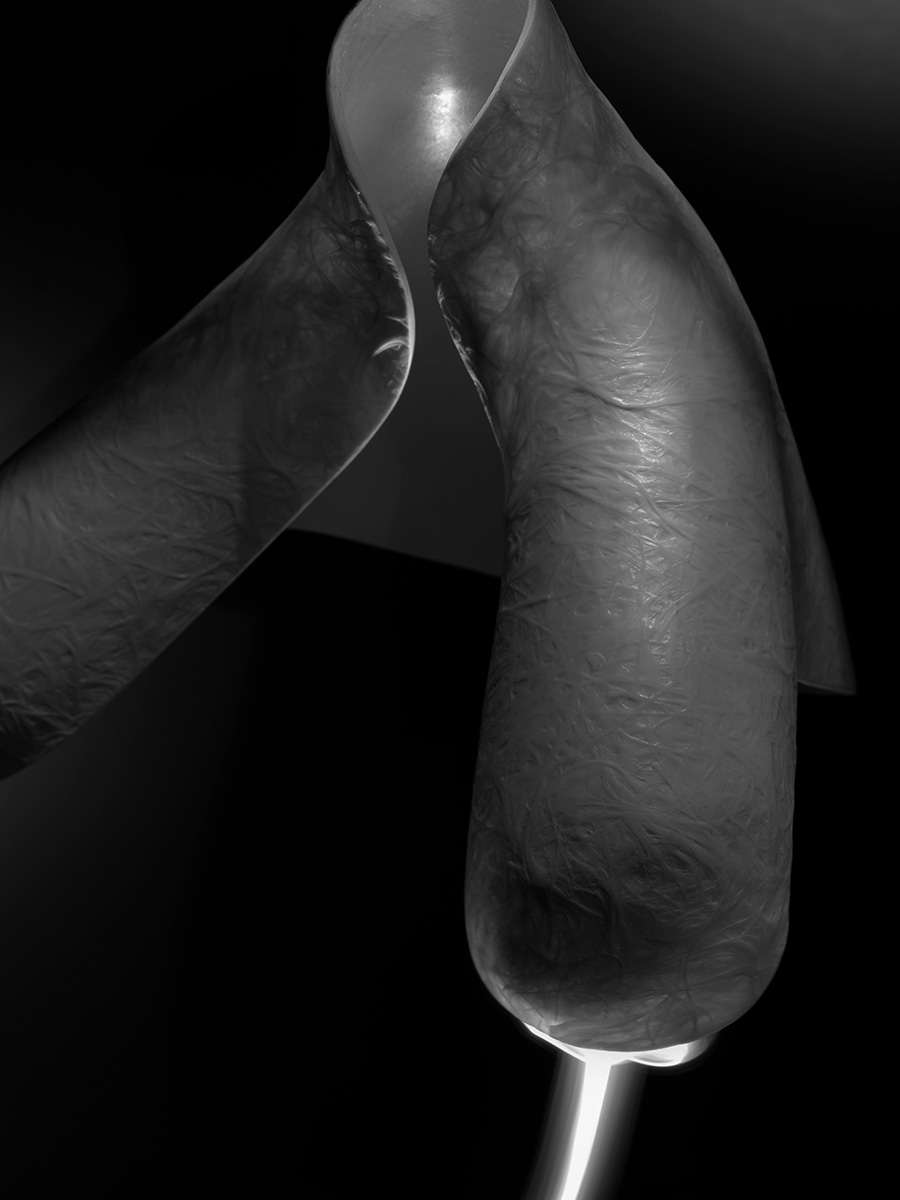: Anatomy hanger 2.0
I would like to begin by introducing the “Anatomy hanger 1.0” and the MINIMUM:MAXIMUM Original Display System :
I started production of the brand about 14 years ago and I held my first exhibition in Ebisu, Tokyo at that time. To make the exhibition more special I decided to create my own original display furniture and hangers. I would like to introduce the display furniture first :
Name: MINIMUM:MAXIMUM(minimum area・maximum capacity)
Material: Iron Size: 120cm×160cm Height: 200cm
MINIMUM:MAXIMUM is a display furniture piece which seeks to prioritize the customer service experience. It allows you to hang about 48 different clothing pieces using Anatomy hangers on a total area of 120 cm x 160 cm. When the clothes are fully displayed along the rack the entire piece comes to resemble a large cylinder.
It is actually a little difficult for clients to be able to view all the clothing and pick things out as they might in a regular store and this is where the customer service aspect becomes the key to everything. The attendant staff must listen carefully and work closely with the client so that they can pick out any suitable pieces one by one from the 48 items on display. This will allow the customers to be able to enjoy the shopping process more as they sit comfortably on a sofa or stand in front of a mirror while viewing the clothing and interacting with the staff.This does not mean that we do not show all the products to them, but rather that we prioritize new discoveries for the clients by giving them more time and ensuring better communication.
… I feel that this idea has a punk spirit that would be hard to find in most stores these days and which goes completely against most recent shopping trends. However, I personally have always thought that this is what true hospitality should be like and not just exclusively about selling clothes.
Hanger: Anatomy hanger 1.0
Material: Beech wood
The idea for the shape of the hanger was born from a simple, sudden inspiration :
I was making the pattern for a jacket and holding the prototype when I put my hand onto the collar part with the back of my hand facing upwards and touching the back of the neck. At that moment, as I saw how the jacket was hanging from my hand, the idea came upon me to make a three-dimensional hanger object that would only use the same minimal area as the size as my hand. Finally, I decided on a design that was a bit bigger than my hand and which had a center of gravity which referred to the position of the trapezius muscles.
To actually make my idea for the hanger into physical reality I needed to find a company to collaborate with that would give the production for the project the time and energy that it required. At that time, the concept and ideal shape of the hanger was already very clear in my mind and I remember that I tried desperately to make my own prototype from modeling clay. What I created was very far from being a professional form but it was, at least, a crystallization of my passion.
In the end I took my “beloved object” to Nakata Kogei Co., Ltd.
They have a showroom and store in Aoyama and I cannot remember exactly if I made a reservation to talk to them or if I just showed up there unannounced. You could say that this was impolite of me but when I came to meet them my “beloved object” gave me a lot of extra confidence.
It probably seemed very strange when I, a designer who had only started up as a sole proprietor about a half year before, suddenly appeared carrying a somewhat bizarre clay object in my hands. I was probably like a naively, enthusiastic rabbit going to negotiate with a ferocious lion. However, luckily, the president of the company (which was established more than 70 years ago) is a very polite and welcoming person.
As a result, President Nakata welcomed me and listened to my ideas and my thoughts about my “beloved object” willingly as if we were children studying and enjoying playing together. Looking back on that time, I wonder if I could handle that kind of situation these days with as much understanding as he showed to me then.
I really appreciate that he allowed me to share in his experience, creative spirit and curiosity and his quest to continue to create and explore. It is still a very important memory which continues to inspire me. With the help of President Nakata, production of the hanger very quickly became a reality.
For better or worse, I have always tried to keep the same playful and open approach to things as I had in my childhood, so I felt like a kid again when I went to visit their head office in Toyoka City in Hyogo Prefecture.
While viewing the production site and experiencing the atmosphere, I learnt the meaning and variation of product shapes and designs and it was so enjoyable that I soon forgot about the time.
I remember that l concentrated all my all nerves on completing my goal and accomplishing the task and made many requests in the process. I think it was really hard for those who actually worked on modifying the shape to make my concept a real product since I had only presented them with mostly theory.
Finally, thanks to the support from Nakata Kogei, I was able to see my “beloved object” launched in the world as an original product.
Even now, 10 years later, this business partner still encourages me not to forget my original intention as a manufacturing company and to keep my initial passion and enthusiasm for creation. I am convinced that this hanger embodied and conveyed the spirit of our brand to the hearts of the people…
So far this has all been about the origins of Anatomy Hanger1.0, since the origin of 1.0 was such a very important starting point for me to create and produce 2.0, (Actually, even though I have spent so long discussing it I still feel that there are still many more details that I could share with you about it.)
Now I will talk about my main theme ; Anatomy hanger 2.0 :
In creating 2.0, I didn’t change the concept so much but instead applied some corrections to the original shape and changed the material. For the main body we began to use FRP (reinforced plastic) and we asked the Fuji Kako Co., Ltd., which manufactures all kinds of different shapes with FRP, to collaborate on the production.
As you might have guessed, I once again used clay to make the new shape and then sent this new “beloved object” to the company for production.
At the time we started production, we were in the midst of the COVID-19 crisis so we could only communicate with each other over the phone and send each other trial models for checking via the post. I am really grateful that despite this they were still able to work hard on the production and I really appreciate that they accepted this process and we could create the finished product together.
I have so far spoken a lot about my memories of 1.0 but here I would like to introduce 2.0.
I hope you will enjoy this product.
When I envisioned the surface and color of the main body I asked for a color and surface texture that could somehow resemble bone. For the string which connects to the main body we used a weather resistant thread which is mostly used for making tents and combined that with polyester to make them into a traditional form of Edo era Japanese braid known as “Kumihimo”. The hook part is made using magnets especially imported from a German company called FIDLOCK so that they can be very easily removed.
Regularly sold items are designed and manufactured according to the height of a general hanger stand, but if you wish to customize any of the sizes, such as the size of the hook or the length of the string, we can do that for you free of charge. Please request the different sizing you require via email.
Regarding any string adjustment after completion, we can make those changes for a separate, small fee.
It is also possible to purchase and consult about these products at our associated dealer stores.
Hanger: Anatomy hanger 2.0
Material: Body: FRP (reinforced plastic)
Connecting string: PTFE 50% Polyester 50%
Connecting parts: Plastic: Magnet

